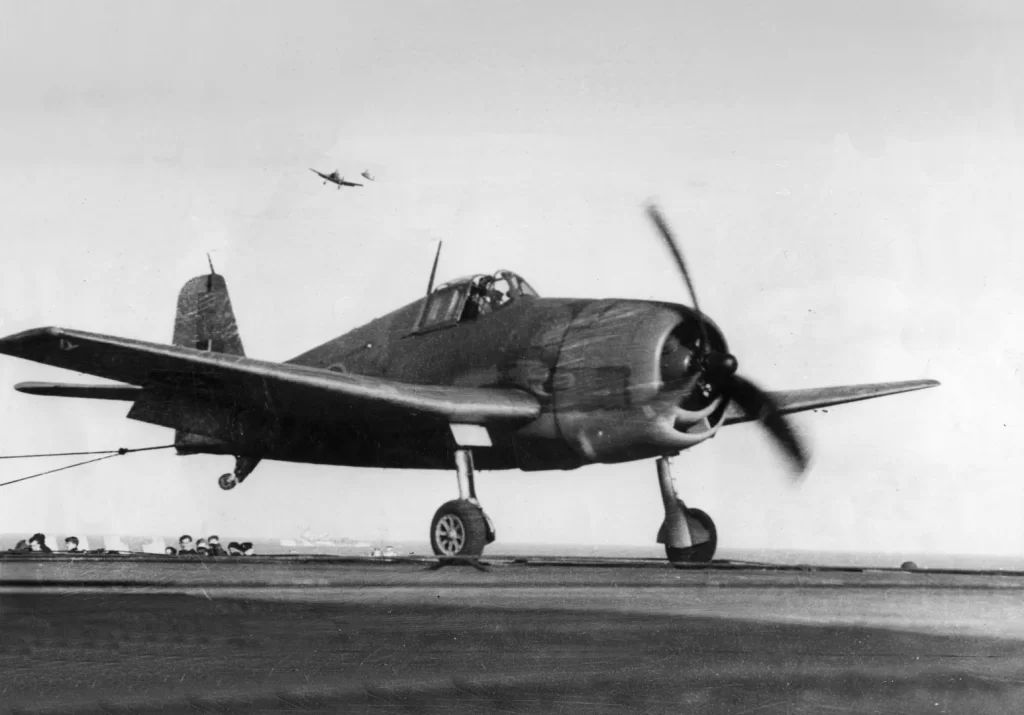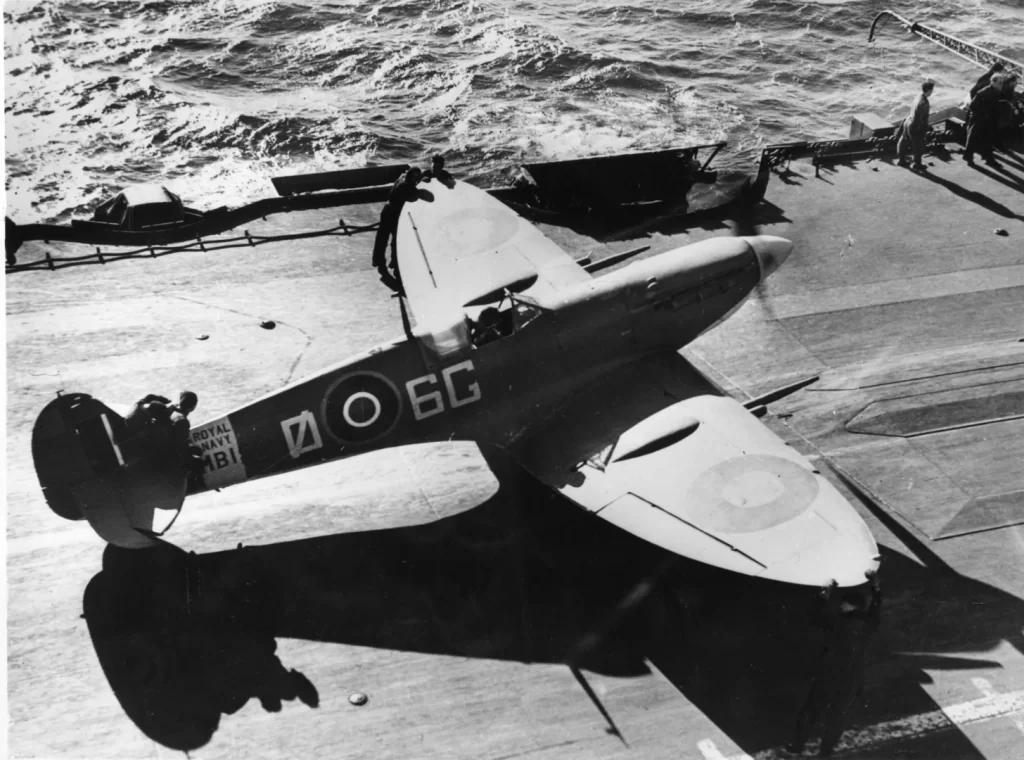Delve into the rich history of the Fleet Air Arm (FAA) during World War II, where formidable flying machines became the cornerstone of Royal Navy’s aerial operations.
1. Grumman Martlet (F4F-4 Wildcat)
A symbol of British-American collaboration, the Grumman Martlet entered service with the FAA, showcasing remarkable reliability and manoeuvrability. With over 1,200 units operated, it proved its worth in various theatres of war.
2. Fairey Swordfish
Known affectionately as the ‘Stringbag,’ the Fairey Swordfish torpedo bomber, though slow, delivered remarkable results. Its pivotal role in the Battle of Taranto showcased its ability to cripple enemy fleets, earning it accolades for its versatility.
3. Vought F4U Corsair
Embraced by the Royal Navy, the Corsair’s unique design and impressive speed made it a standout performer. Despite initial challenges, it emerged as a key asset for 18 FAA squadrons, contributing significantly to wartime efforts.
4. Hawker Sea Hurricane
A naval adaptation of the iconic Hurricane, the Sea Hurricane marked the FAA’s foray into carrier-based operations. Its maiden victory in aerial combat underscored its significance in protecting convoys and vital maritime routes.
5. Fairey Firefly
Serving as a vital nighttime fighter-reconnaissance aircraft, the Firefly excelled in shadowing enemy targets at sea. Its adaptability and wide speed range made it an invaluable asset for protecting torpedo bombers during missions.
6. Grumman TBF Avenger
Dubbed the ‘Tarpon,’ the Avenger proved its mettle as a torpedo bomber with superior speed and range. Notably deployed in the Far East, it played a crucial role in bombing raids over Japan, showcasing its versatility in maritime operations.
7. Fairey Albacore
Despite early challenges, the Albacore served faithfully in anti-submarine patrols across multiple naval squadrons. Its retirement in 1944 marked a transition to more advanced aircraft, leaving behind a legacy of service during critical maritime campaigns.
8. Fairey Barracuda
As the FAA’s first all-metal aircraft, the Barracuda set new standards in carrier-based aviation. Though primarily a torpedo and dive bomber, its adaptability to different ordnance types showcased its versatility in naval warfare.
9. Grumman F6F Hellcat
Though experiencing less air-to-air combat, the Hellcat’s presence was felt in the Far East with the British Pacific Fleet. Equipped with various variants, it served faithfully across different roles, contributing to maritime supremacy.
10. Supermarine Seafire
Born from the iconic Spitfire, the Seafire became the FAA’s frontline fighter, undergoing trials and tribulations in deck-based operations. Despite losses, it played a crucial role in Allied invasions, demonstrating its prowess in maritime combat.
Explore the legacy of these iconic British naval aircraft, which not only shaped wartime strategies but also paved the way for modern naval aviation.
Concluding Thoughts
Reflecting on the legacy of these classic British naval aircraft from World War II, it becomes evident that they not only played a pivotal role in shaping wartime strategies but also laid the foundation for modern naval aviation. Their versatility, resilience, and remarkable performance in various theaters of war underscore the ingenuity and dedication of those who operated them. As we explore the annals of history, these iconic aircraft stand as a testament to the courage and sacrifice of the Royal Navy’s personnel, forever etched in the chronicles of maritime warfare.